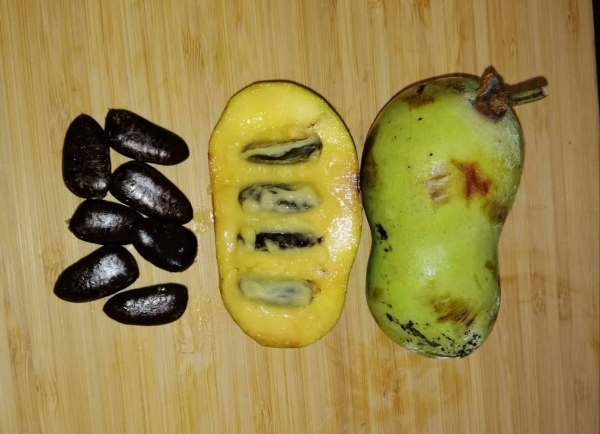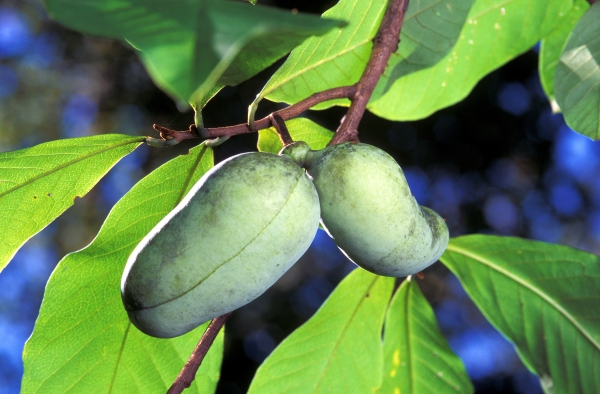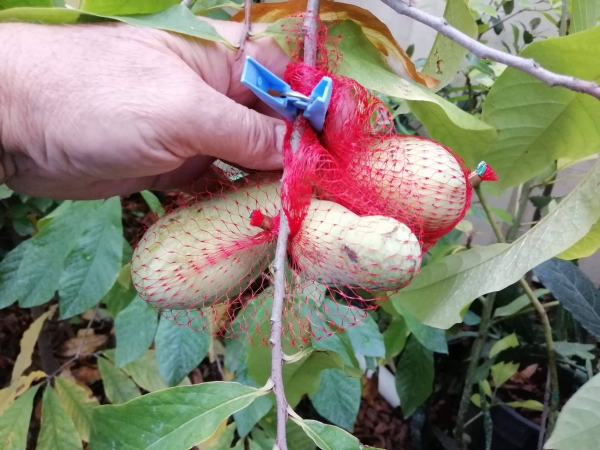North American Paw Paw
Asimina triloba$99.00 ($79.00-$99.00 choose a size)
When will it be in Stock?
We previously had the most to buy in Oct and Nov. With limited quantities for sale in other months. They are unlikely to be available in Apr and May. Special Note: This plant is in the top 25% of plants customers are wanting to know about. It is very unlikely that you will be able to purchase this plant unless you click above to be notified when it is in stock again. Please expect a delay on this item as we notify those who have waited the longest .
Specifications of North American Paw Paw
Preferred Climate Subtropical, Warm TemperateLearn About Climate Zones
Grown From SeedlingLearn About Propagation Methods
Max Height (when in the ground with good conditions) 2-5m
Plants required to Pollinate 2 compatible plants (Pollination Required)Learn about Pollination
Can it Handle Frosts? Yes
Amount of leaves in Winter? No Leaves (Deciduous)
Quarantine Restrictions to these Areas WA
Water Requirements Frequent Watering
Is it a Dwarf Fruit Tree? No (Full Size)
Time to Fruit/Flower/Harvest 4-5 Years
Sun or Shade Full (Sun:80%-100%), Part (Sun:50-80%)
Preferred Soil Type Poor Drainage (Clay)
Soil pH Moderately Acidic (5.5-6.5), Neutral (6.6-7.3pH)
Fruiting/Harvest Months April, May, June
Create a Filter to find similar plants
Pollinators for the North American Paw Paw
Pollination required as female flower parts open before the male so trees are often self-infertile. Plant another seedling nearby
North American Paw Paw
$99.00 ($79.00-$99.00 choose a size)
Customers also bought
These plants are often purchased together. Also check plant information for suitability in your orchard.
Jujube - Li
$124.00 ($119.00-$139.00 choose a size)
Carambola Starfruit - Kary
$59.00 ($59.00-$79.00 choose a size)
Dwarf Jaboticaba - Costada
$39.00 ($29.00-$59.00 choose a size)
Ambarella
$39.00 ($19.75-$79.00 choose a size)
Plum - Gulf Ruby
$49.00
Wax Jambu - Purple
$49.00 ($49.00-$64.00 choose a size)
Customer Tips & Reviews North American Paw Paw
STANTHORPE, QLD
North American Paw Paw
Arrived in great health. I am having difficulty keeping it alive though. Probably weird weather related. Glad I could get 2 plants though. I was looking for them for years.
TAMBORINE MOUNTAIN, QLD
North American Paw Paw
Healthy plants, still some years away from harvest.
North American Paw Paw
Grew 2 trees Melb 20yrs ago, shade of apricot, mostly neglected. 1 Grafted (lost name - ex Adelaide Hill Nursery) 1 seedling. Both fruited with pollination. Seedling tight with seeds, but grafted had good flesh, poor aftertaste. Want good cultivar
MOUNT WAVERLEY, VIC, Australia
This is a Daleys seedling at the front and 2 seedlings from another source behind - its about 3,5mt now and has flower buds forming for fruit next spring 2019. Smaller Asimina is a Grafted Pennsylvania Gold planted in 2017.
GEROGERY, NSW, Australia
have 4 of these.dont stand up to the wind too well, set frui tlast year with hand polination, but wind and birds got to the fruit.
TAMWORTH, NSW, Australia
North American Paw Paw is a member of the annonaceae family (custard apple) which include cherimoya, atemoya, rollinia, A. squamosa, soursop (graviola), soncoya etc which most of them have superb taste. Unlike the other members of annonaceae family a...
NOBLE PARK, VIC, Australia
Asimina triloba - Sunflower, Prima - Self Fertile with high quality fruit!Have 4 trees that have been fruiting for the past 3 years including two grafted types. Also growing the self fertile varieties Sunflower and Prima which are most popular in Europ...
































